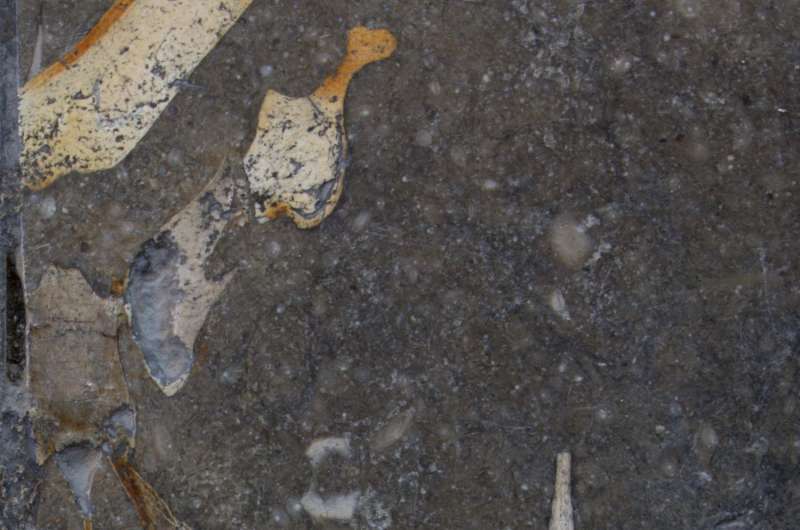Fossils under your feet: Ancient sea cow found in Spanish street

Have you ever spotted something unexpected while walking down the street? Last December, paleontologists literally stumbled upon a new discovery of a fossil sea cow in a very unexpected place - in a limestone paving stone in Spain! Research presented this week at the Society of Vertebrate Paleontology meeting in Salt Lake City, Utah, describes this remarkable find and how it is changing our understanding of sea cow evolution.
The unusual pavement was spotted in the picturesque town of Girona, northern Spain. A local geologist first noticed the fossil and submitted it to the website 'http://www.paleourbana.com', an online database of urban fossils worldwide. As word of the fossil spread, paleontologists Dr. Manja Voss and Dr. Oliver Hampe, from the Museum für Naturkunde, Berlin, visited Girona to take a look.
Closer inspection of the paving stones by Dr. Voss and Dr. Hampe revealed that the complex array of shapes was slices of the backbone and skull of an ancient marine mammal. Based on the skull and teeth, they concluded that it was a sirenian, or sea cow, a member of a group of large, plant-eating marine mammals represented today by the living manatee and dugong.
Once the significance of the fossil was understood, Dr. Voss and Dr. Hampe worked with the mayoralty of Girona and local geologists to have the 50x30cm large paving stones removed for study. Since the rock was cut into slices to form the paving stones, the paleontologists had a cross-sectional view of the sea cow's skull, revealing many details of its anatomy. However, they also wanted to see inside the stones, so they took them to a medical hospital, the Clinica Girona, where they were CT-scanned.

The scientists discovered that the 'Girona Sea Cow' is most likely a representative of Prototherium, a genus of extinct sea cows from Spain and Italy. However, this find is particularly important because the rocks from which the paving slabs were quarried are 40 million years old, explains Voss. "Hence the find represents one of the oldest sea cows in Europe, making it a unique opportunity to enhance our knowledge on the evolution and diversity of this marine mammal group that arose about 50 million years ago."
Next the scientists will use the CT scans to try to digitally piece together the separate skull slices of Prototherium. This can help them answer more questions, such as the animals' age when it died and its potential relationship to other fossil sea cows.
The Girona Sea Cow, which is providing clues into the evolution of sea cows in the ancient oceans of Europe, shows that fossils can be found in surprising locations. Voss says "While the limestone used to build the city of Girona are enriched by fossils—it is quite common to identify invertebrates for example—finding a marine mammal on which thousands of people walked over for the last two decades is indeed very peculiar."

Provided by Society of Vertebrate Paleontology




















